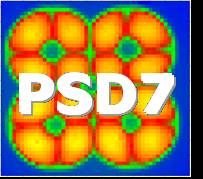Speaker
Prof.
Bob Ott
(University of Surrey, Rutherford Appleton Laboratories and the Institute of Cancer Research)
Description
The PETRRA positron camera is a novel, large-area positron camera
based on coupling barium fluoride crystals to a multiwire
proportional chamber filled with a photosensitive vapour, tetrakis-
dimethylamino ethylene (TMAE). The present camera consist of two
detectors each with 600mm x 400mm sensitive area containing sheets
of 1cm thick crystals. This camera has a spatial resolution of ~6-
7mm FWHM, a timing resolution of 3.5ns and a sensitivity of
8kcps/kBq/ml. Whilst the former parameters are entirely acceptable,
an increase in sensitivity is needed if the camera is to be
competitive in a clinical environment. The sensitivity and spatial
resolution are defined by the crystal thickness and increasing the
latter to improve sensitivity would reduce the spatial resolution
unless some form of crystal segmentation is used.
Experiments have been carried out using a small (100mm x 100mm)
prototype detector at the Rutherford Appleton Laboratory. Small
barium fluoride crystals 50mm x 4.6mm in length and width and
thickness of 10mm, 15mm, 20mm and 25mm have been tested suing a Na-
22 point source and a NaI(Tl) detector in coincidence with the
camera. Preliminary results show that the sensitivity can be
increased by more than a factor of two with the thicker crystals
whilst the resolution is ~4-5mm across the width and ~9-10mm along
the length. Based on these results it is proposed that the barium
fluoride crystals in the PETRRA detector can be replaced with 25cm
thick crystals segmented to ~5-6m in one dimension. This would
increase the coincidence efficiency for two detectors by ~5-6 whilst
retaining the transaxial spatial resolution to ~5mm.
Primary author
Prof.
Bob Ott
(University of Surrey, Rutherford Appleton Laboratories and the Institute of Cancer Research)




